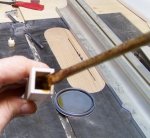Royall Clark
Member
- Messages
- 1,355
British pounds to US dollars. Just to be sure I came up with 41 pounds = $58 dollars and change or just call it 59 bucks. Ready to pull the trigger but just want to send the correct amount.
 TRUST MEEEEEEE
TRUST MEEEEEEE 


 Just sent John the 41 pounds British ($60.24) and hopefully the plans will ship on Monday.
Just sent John the 41 pounds British ($60.24) and hopefully the plans will ship on Monday. 


TRUST MEEEEEEE
Jay


Geez..... That sounds like my EX wife talkin now!!




 (i thought the spinny guys were the dark side). but, it will have to take it's place behind the 3 projects for the fair, and the sis in law's 5 poster frames...
(i thought the spinny guys were the dark side). but, it will have to take it's place behind the 3 projects for the fair, and the sis in law's 5 poster frames... now i'm really tempted to send for the plans. i must be falling under the influence of darth jay(i thought the spinny guys were the dark side). but, it will have to take it's place behind the 3 projects for the fair, and the sis in law's 5 poster frames...


 If you order today, John says they go out in the Monday post
If you order today, John says they go out in the Monday post come on Dan do it, do it, do,
come on Dan do it, do it, do,



Hey, guys, I just ordered the Seiko tuner like Toni's from Amazon for less than $13! I had a book I wanted and was waiting for the total to go over $25 for the free shipping. This did it! Should be here by the end of next week.
WooHoo!
Thats not bad. There is also some free software packages - so if you have a mic for your pc, you might be able to do it for free.

You can build the pipes out of almost anything but you should alway use hardwood of some type on the front parts. This pipe is build from 3mm (1/8") Baltic Birch ply with a soft maple plug. Even Oak will work if that is all you have BUT its best to use something with a more closed grain.
I also like building the body's of the pipes from pine, Sugar pine would work Great if you can get that up there or basswood.
The easy answer is, its what I had in front of me
The tuner I have I got from the local music store just don't get one that is only for guitars
The one Toni shows is a good one and thats a very good price.
Jay






 I just don't know much about the different mahoganies.
I just don't know much about the different mahoganies.Jay, what about the outside of the pipe? If that will be getting any treatment, why not just dip the whole pipe and then let it drip dry? One last thing and this may be obvious to most but I'm going to have a lot of Sapele scraps around the shop soon. Will that work for the front of the pipes?I just don't know much about the different mahoganies.



